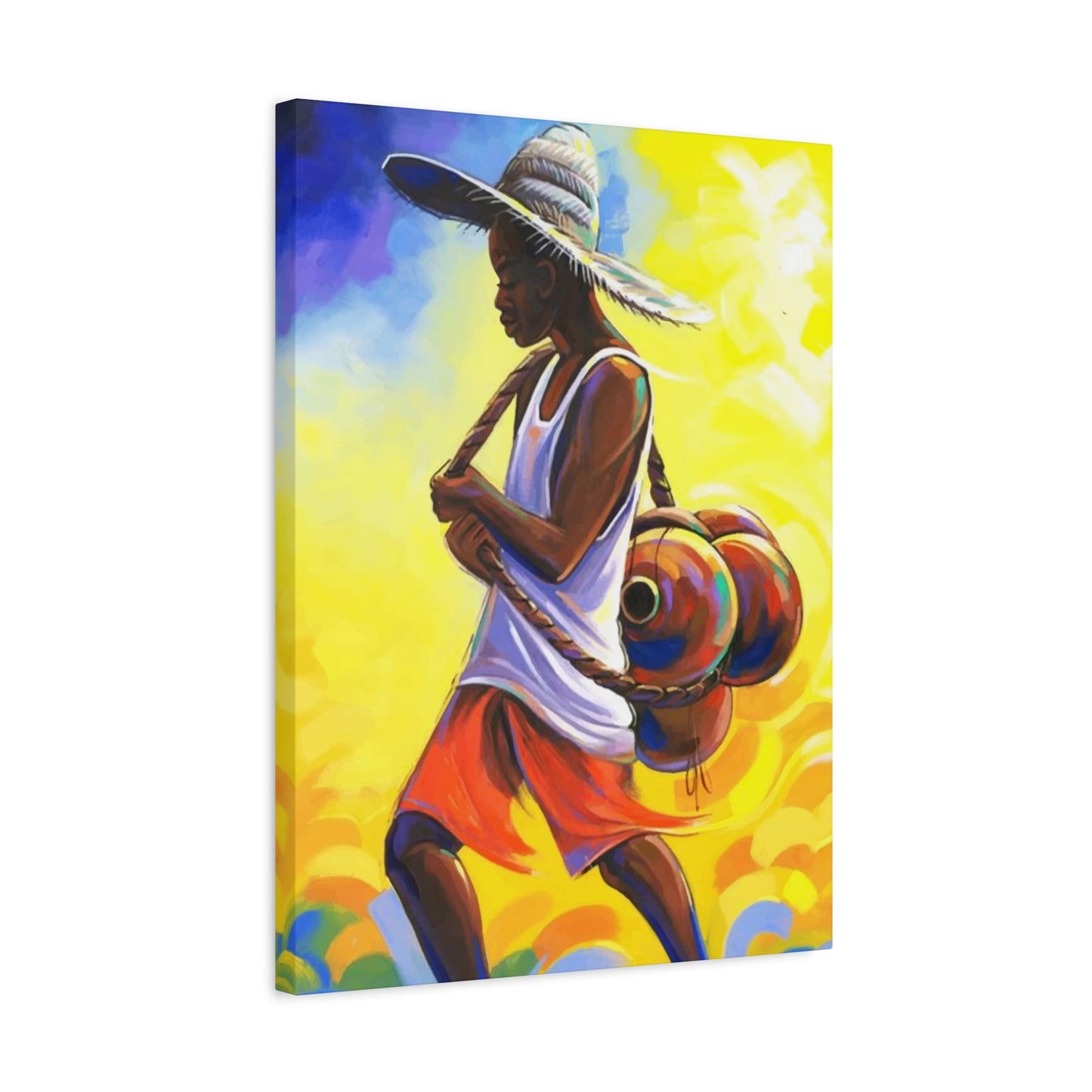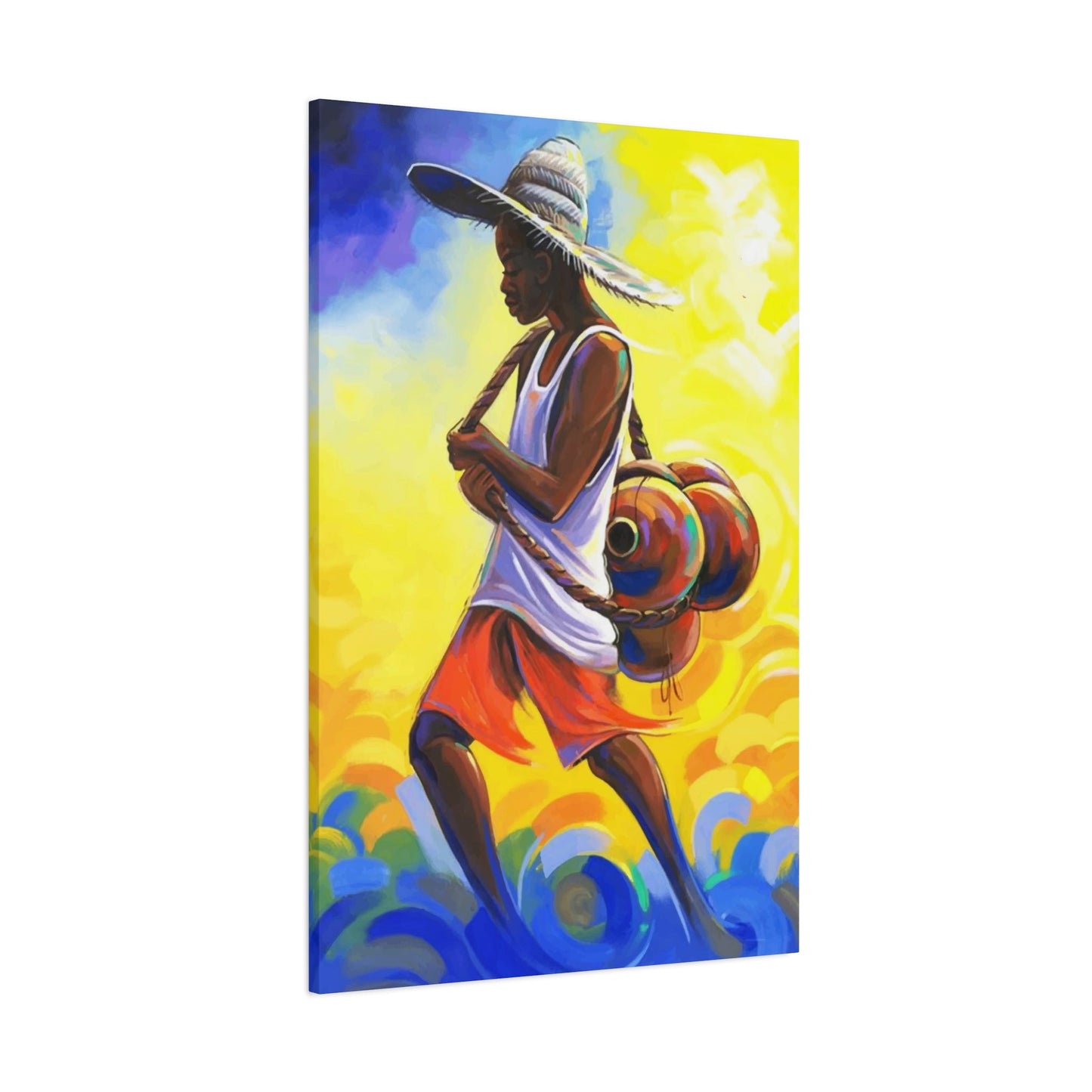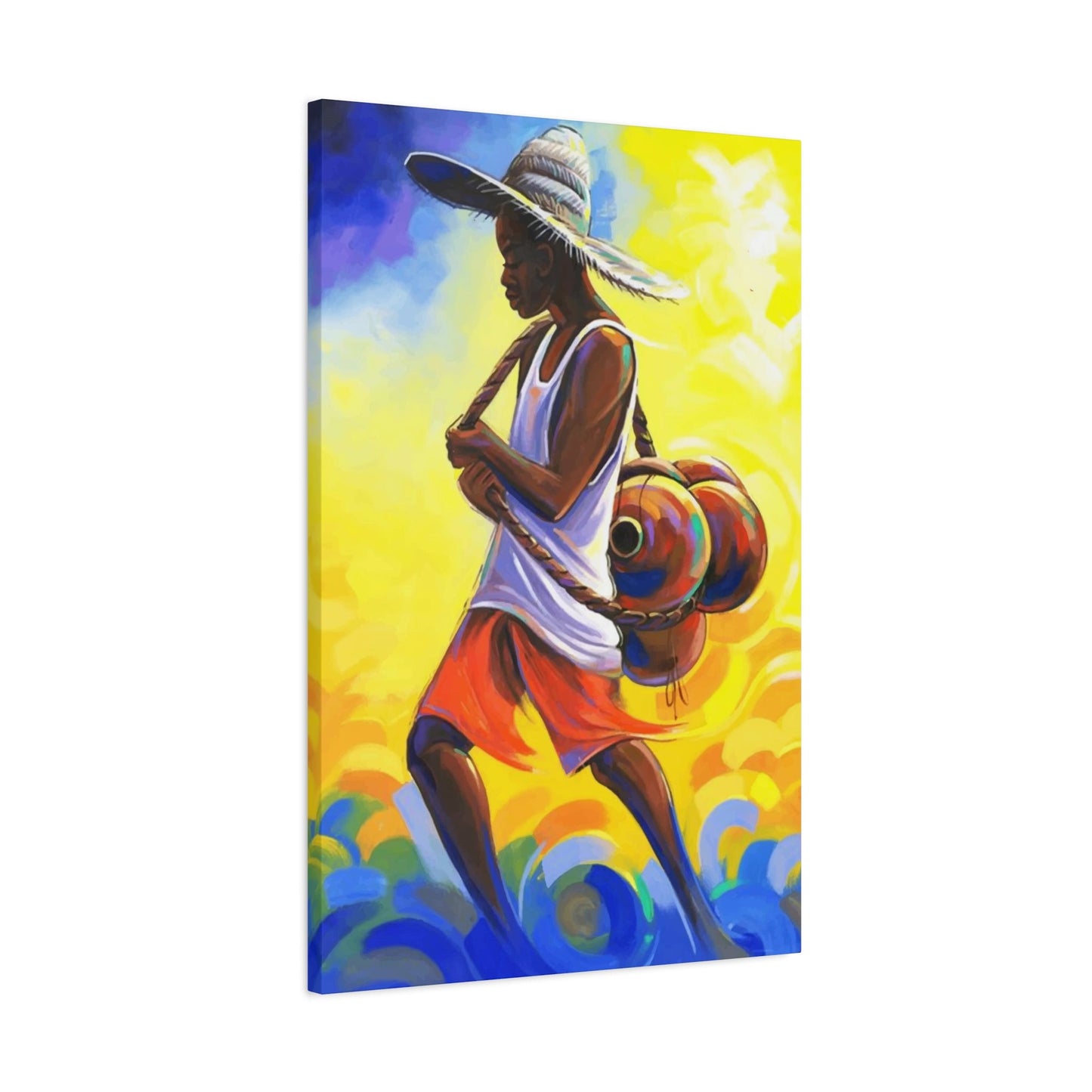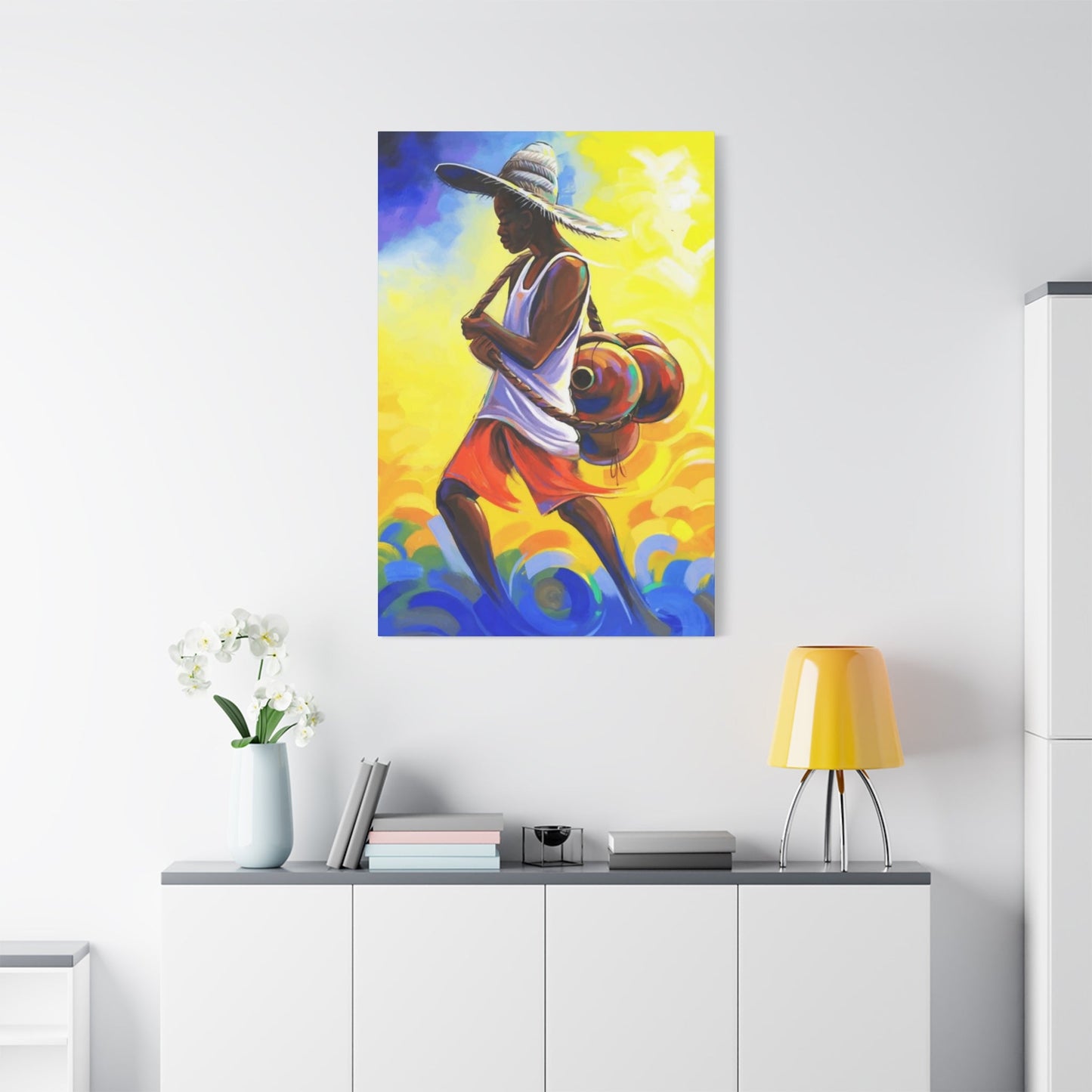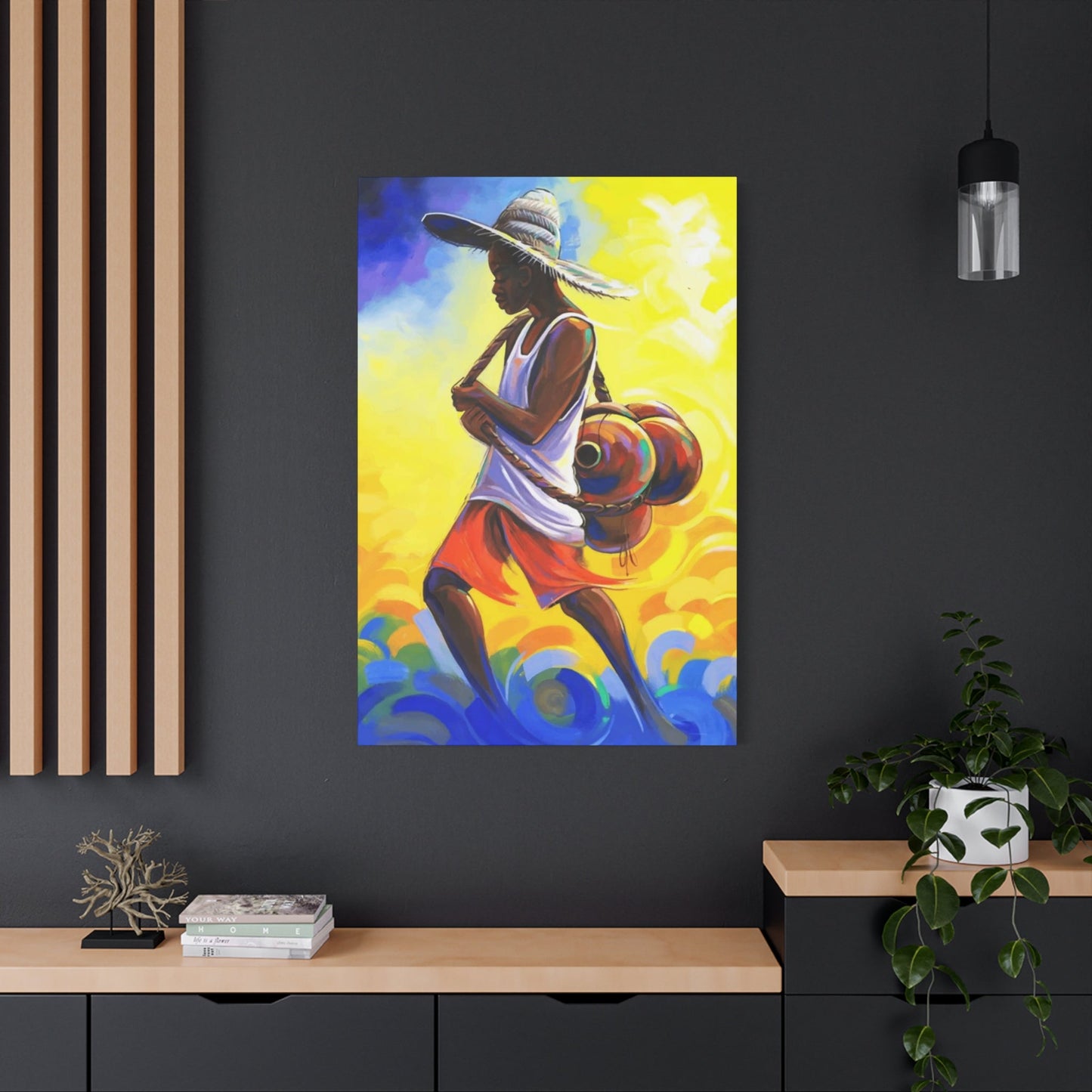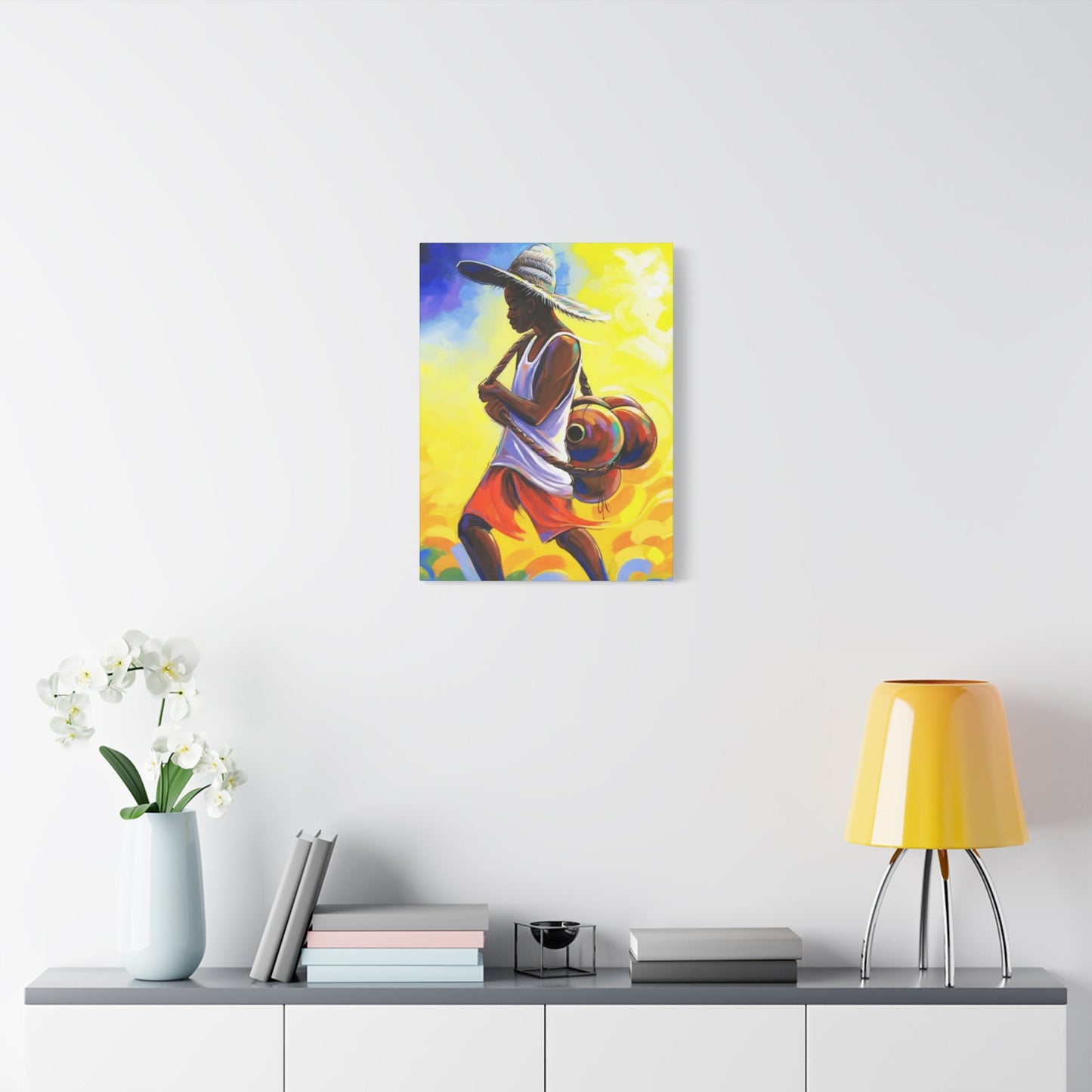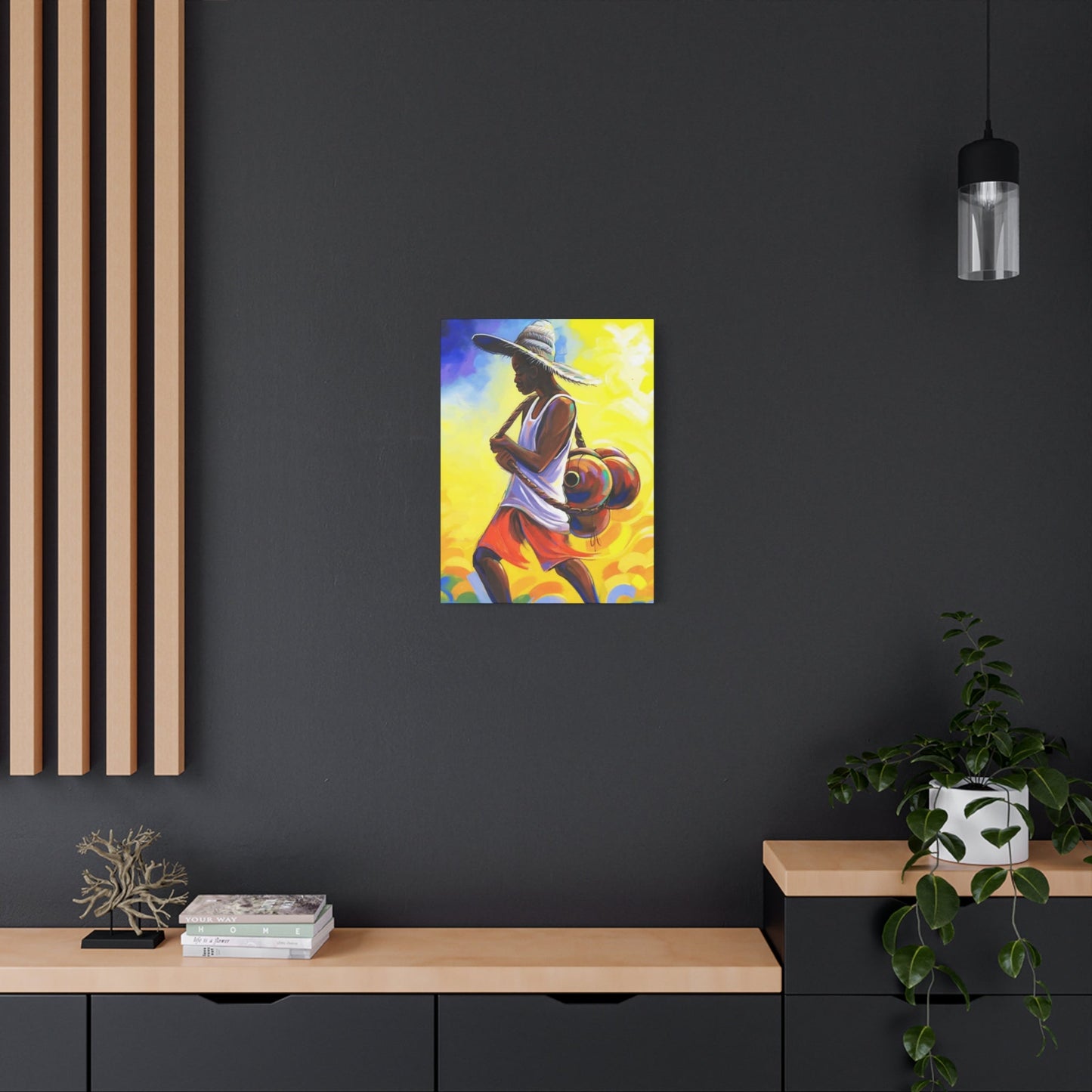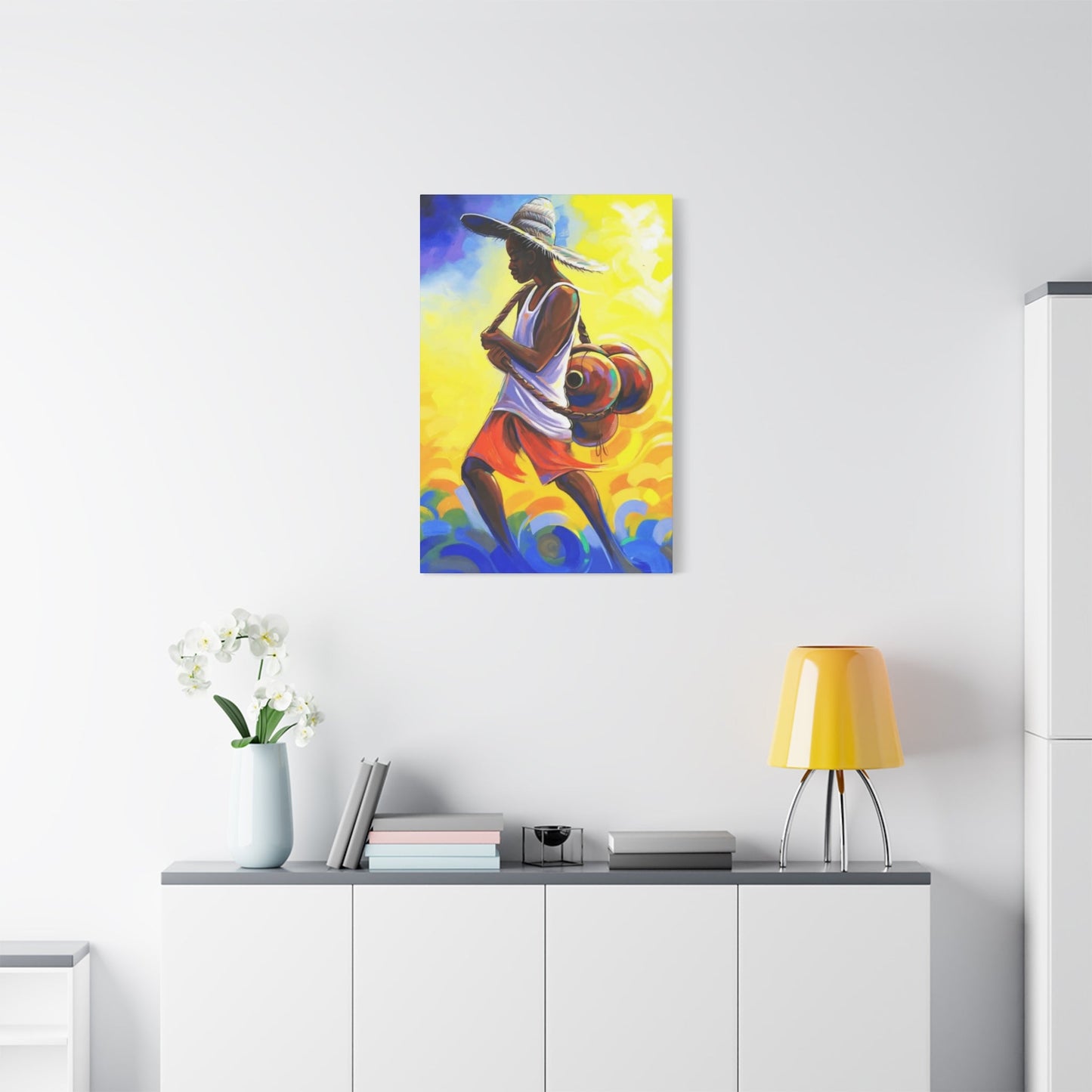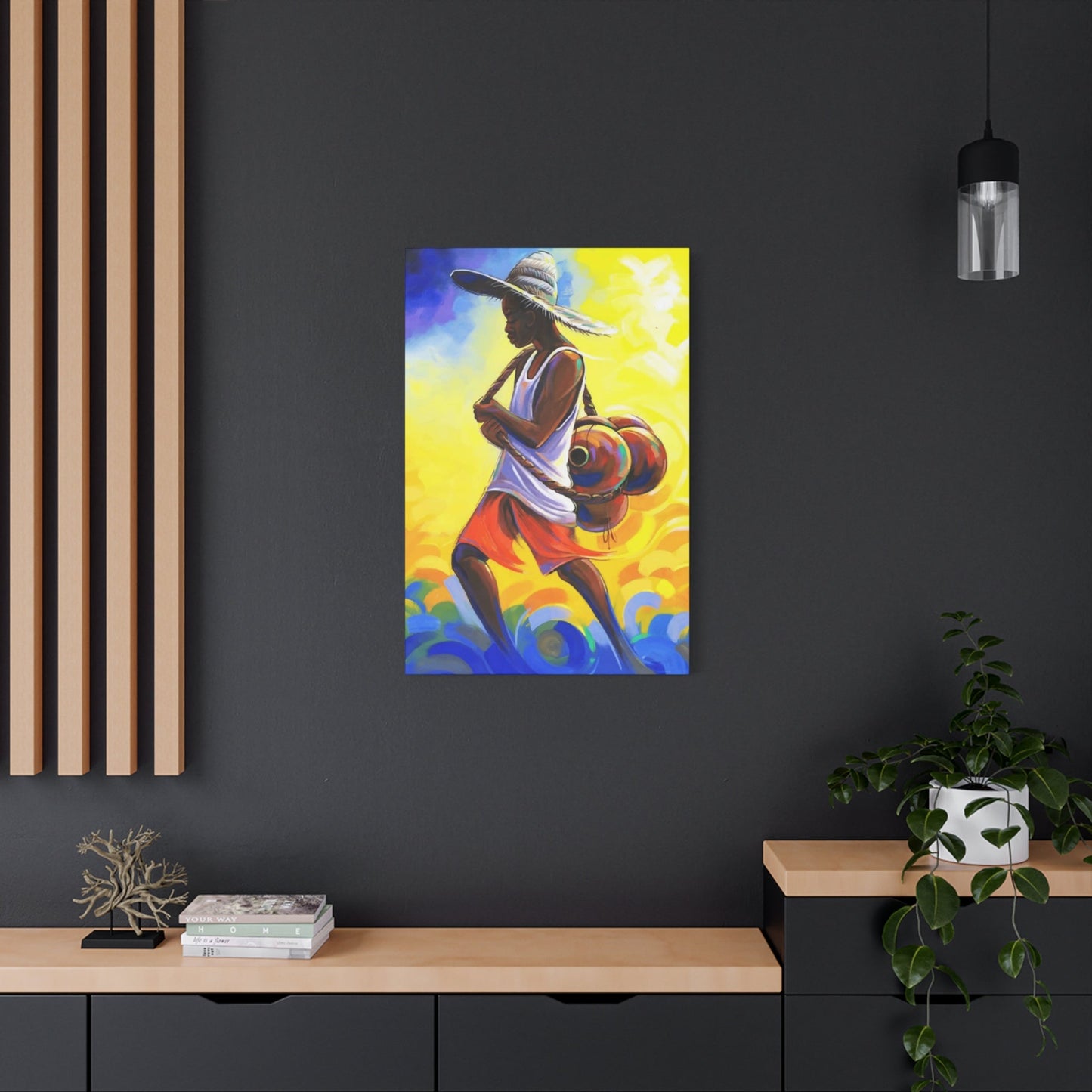African Boy Inspired Wall Art: Embracing Tradition and Innocence
African boy wall art represents more than mere decoration; it embodies cultural heritage, artistic expression, and powerful storytelling that resonates across generations. This comprehensive exploration delves into the multifaceted world of African boy artwork, examining its various styles, cultural significance, and practical applications in modern living environments. From traditional portraits that capture the essence of African youth to contemporary interpretations that blend cultural heritage with modern artistic techniques, African boy wall art serves as a bridge between past and present, offering viewers a window into the rich tapestry of African culture and the universal themes of childhood, growth, and potential.
The significance of African boy wall art extends beyond aesthetic appeal, functioning as a powerful medium for cultural preservation, educational engagement, and social commentary. Artists working in this genre draw inspiration from diverse sources, including traditional African art forms, contemporary social movements, and personal experiences that reflect the complexity of African identity in a globalized world. These artworks often serve as visual narratives that celebrate the strength, resilience, and beauty of African youth while challenging stereotypes and promoting cultural understanding.
Contemporary collectors and art enthusiasts increasingly recognize the value of African boy wall art as both an investment and a means of cultural expression. The growing appreciation for diverse artistic voices has created new opportunities for African artists to showcase their work on international platforms, leading to greater visibility and market recognition. This increased exposure has resulted in a more nuanced understanding of African artistic traditions and their evolution in contemporary contexts.
The versatility of African boy wall art makes it suitable for various environments, from residential homes to educational institutions, corporate offices, and public galleries. Each setting offers unique opportunities to engage with the artwork's cultural and artistic messages, creating meaningful connections between viewers and the rich heritage represented in these pieces. The selection process involves careful consideration of factors such as artistic style, color palette, size, and thematic content to ensure that chosen pieces align with the intended aesthetic and cultural goals.
Diverse Artistic Approaches in African Boy Wall Art
The realm of African boy wall art encompasses an extraordinary range of artistic styles, each offering unique perspectives on African culture, identity, and childhood experiences. Contemporary artists working in this medium draw from rich traditional foundations while incorporating modern techniques and materials to create works that speak to both historical heritage and contemporary relevance. The diversity of approaches reflects the complexity of African artistic traditions and the dynamic nature of cultural expression in the modern era.
Realistic portrayals form a significant portion of African boy wall art, with artists employing traditional painting techniques to capture the authentic features, expressions, and cultural elements that define African youth. These realistic works often focus on fine details such as facial features, traditional clothing, jewelry, and ceremonial items that carry cultural significance. The attention to detail in realistic African boy portraits serves multiple purposes: preserving cultural authenticity, celebrating individual beauty, and providing educational value for viewers unfamiliar with African traditions and customs.
Photorealistic techniques have gained popularity among contemporary artists creating African boy wall art, utilizing advanced painting methods and digital technologies to achieve stunning levels of detail and accuracy. These works often blur the line between photography and painting, creating powerful visual statements that capture not only physical likeness but also emotional depth and cultural context. The hyperrealistic approach allows artists to showcase technical mastery while drawing attention to the subjects' humanity and individuality.
Abstract interpretations of African boy themes offer artists freedom to explore cultural concepts, emotions, and symbolic meanings through non-representational forms. These works often incorporate traditional African motifs, patterns, and color schemes while departing from literal representation to focus on essential qualities and spiritual dimensions. Abstract African boy wall art challenges viewers to engage with the artwork on multiple levels, encouraging personal interpretation and emotional connection rather than relying solely on visual recognition.
Semi-abstract approaches combine elements of realistic representation with abstract techniques, creating dynamic compositions that balance recognizable features with interpretive elements. This style allows artists to maintain connection to their subjects while exploring creative possibilities through distortion, stylization, and symbolic representation. Semi-abstract African boy wall art often incorporates traditional patterns, geometric forms, and cultural symbols that add layers of meaning to the overall composition.
Cubist influences appear in some contemporary African boy wall art, with artists employing fragmentation, multiple perspectives, and geometric reconstruction to create dynamic visual experiences. This approach often reflects the complexity of modern African identity, showing subjects from multiple angles and time periods simultaneously. Cubist-inspired African boy portraits challenge traditional notions of representation while celebrating the multifaceted nature of cultural identity.
Expressionist techniques allow artists to prioritize emotional content over realistic representation, using bold colors, exaggerated forms, and dynamic brushstrokes to convey feelings and cultural experiences. Expressionist African boy wall art often addresses themes of struggle, hope, pride, and resilience, using visual intensity to communicate messages that transcend literal representation. These works invite viewers to connect emotionally with the subjects and their cultural contexts.
Mixed media approaches combine traditional painting techniques with collage elements, textural materials, and found objects to create rich, layered compositions. Mixed media African boy wall art often incorporates authentic African materials such as textiles, beads, shells, and natural fibers, adding tactile dimensions and cultural authenticity to the visual experience. These works celebrate the resourcefulness and creativity inherent in African artistic traditions while pushing boundaries in contemporary art.
Digital art techniques have opened new possibilities for creating African boy wall art, allowing artists to experiment with color manipulation, texture effects, and compositional elements that would be difficult to achieve through traditional methods. Digital African boy portraits often incorporate photographic elements with painted details, creating hybrid works that combine technological innovation with artistic expression. The accessibility of digital tools has democratized art creation, enabling more artists to contribute to this important cultural dialogue.
Street art and graffiti influences have found their way into African boy wall art, particularly in urban contexts where artists use public walls and buildings as canvases for cultural expression. These works often address social justice themes, celebrate African heritage in diaspora communities, and challenge stereotypes through bold, accessible visual statements. Street art-inspired African boy portraits bring cultural celebration into public environments, making art accessible to diverse audiences.
Selecting African Boy Wall Art for Different Living Environments
The process of choosing African boy wall art for residential environments requires careful consideration of multiple factors that influence both aesthetic impact and cultural resonance. Successfully integrating these powerful artworks into living areas involves understanding the relationship between artistic content, room function, existing decor elements, and personal connection to the cultural themes represented. The selection process becomes an opportunity for homeowners to express their values, cultural appreciation, and artistic preferences while creating meaningful focal points within their living environments.
Scale considerations play a crucial role in selecting appropriate African boy wall art pieces for specific rooms and wall dimensions. Large-scale works can serve as dramatic focal points in spacious living areas, dining rooms, or entryways, commanding attention and setting the tone for the entire environment. These substantial pieces often work best when given adequate viewing distance and appropriate lighting to fully appreciate their impact and detail. Conversely, smaller works may be more suitable for intimate settings such as reading nooks, hallways, or bedroom areas where closer viewing enhances the personal connection with the artwork.
Color harmony between African boy wall art and existing room elements requires thoughtful analysis of both dominant and accent colors within the chosen pieces. Many African boy portraits feature rich, warm color palettes that can complement earth-tone furnishings, wooden elements, and natural textile choices. However, some contemporary interpretations may incorporate bold, contrasting colors that can energize neutral room schemes or coordinate with more vibrant decorating approaches. Understanding the emotional impact of color combinations helps ensure that selected artworks enhance rather than compete with the overall room aesthetic.
Thematic consistency within room design should guide the selection of African boy wall art to create cohesive visual narratives that support the intended atmosphere and function of each area. Living rooms designed for family gathering and conversation may benefit from uplifting, celebratory portrayals of African youth that promote positive cultural dialogue. Bedrooms might feature more contemplative or dreamlike interpretations that encourage reflection and peaceful rest. Study areas or home offices could incorporate educational or inspirational African boy portraits that motivate learning and cultural awareness.
Lighting conditions significantly impact the viewing experience and preservation of African boy wall art, necessitating careful consideration of both natural and artificial illumination sources. Artworks positioned near windows may experience color fading over time if exposed to direct sunlight, while inadequate lighting can diminish the visual impact of detailed works. Professional picture lighting or strategically positioned room lighting can enhance the viewing experience while protecting the artwork investment. Understanding the interplay between lighting and artwork helps ensure optimal presentation and longevity.
Room function influences the appropriate selection of African boy wall art themes and styles to support intended activities and emotional responses. Entertainment areas may benefit from dynamic, energetic portrayals that spark conversation and cultural interest among guests. Quiet reading areas might feature more contemplative works that encourage reflection and peaceful engagement with cultural themes. Children's play areas could incorporate playful, age-appropriate African boy artwork that celebrates cultural diversity while creating positive associations with African heritage.
Architectural elements within rooms provide opportunities to enhance the presentation of African boy wall art through strategic placement and complementary design choices. High ceilings can accommodate vertically oriented portraits or series of related works arranged in ascending compositions. Alcoves or architectural niches provide natural framing opportunities for smaller pieces. Built-in shelving or mantlepieces can support three-dimensional elements that complement flat artworks, creating layered cultural displays.
Personal connection to the cultural themes and artistic styles represented in African boy wall art should guide selection decisions to ensure meaningful long-term relationships with chosen pieces. Artworks that resonate emotionally with viewers tend to maintain their impact over time, becoming valued elements of the home environment rather than merely decorative objects. Understanding personal responses to different artistic approaches, cultural themes, and visual elements helps identify pieces that will continue to provide satisfaction and inspiration throughout changing life circumstances.
Budget considerations influence both the selection process and the quality of African boy wall art pieces available to collectors. Original paintings and sculptures typically command higher prices than prints or reproductions, but they offer unique ownership experiences and potential investment value. Limited edition prints provide middle-ground options that combine artistic quality with accessibility. Understanding the relationship between price, artistic quality, and personal satisfaction helps guide selection decisions that align with both financial resources and cultural goals.
Cultural Significance and Symbolic Meanings in African Boy Art
The rich symbolic language embedded within African boy wall art reflects centuries of cultural tradition, spiritual belief systems, and social structures that continue to influence contemporary artistic expression. Understanding these deeper meanings enhances appreciation for the artworks while promoting cultural sensitivity and awareness among viewers from diverse backgrounds. The symbolic elements present in African boy portraits serve multiple functions: preserving cultural knowledge, communicating social values, and connecting contemporary viewers with ancestral wisdom and traditions.
Traditional African cultures often view children as bridges between past and future, embodying the continuity of community values, cultural practices, and ancestral wisdom. This perspective infuses African boy wall art with layers of meaning that extend beyond individual portraiture to encompass broader themes of heritage preservation, community responsibility, and cultural transmission. Artists working in this tradition understand their role as cultural custodians, using visual narratives to ensure that important cultural elements remain visible and relevant in contemporary contexts.
Religious and spiritual symbolism frequently appears in African boy wall art, reflecting the deep integration of spiritual beliefs within African cultural systems. Many traditional African societies maintain strong connections to ancestral spirits, natural forces, and divine influences that guide daily life and community decisions. Artists may incorporate symbols representing protection, blessing, wisdom, or spiritual guidance, creating artworks that function as both aesthetic objects and spiritual focal points within living environments.
Coming-of-age ceremonies and initiation rites provide rich thematic material for African boy wall art, with artists depicting various stages of transition from childhood to adulthood. These ceremonial elements often include specific clothing, body decoration, ritual objects, and symbolic gestures that carry deep cultural significance within their original contexts. Contemporary interpretations of these themes allow viewers to engage with important cultural concepts while appreciating the artistic skill required to represent complex ceremonial elements.
Traditional African clothing and jewelry featured in African boy wall art carry specific cultural messages related to social status, tribal affiliation, spiritual beliefs, and personal achievements. Artists who accurately represent these cultural elements demonstrate respect for traditional knowledge while providing educational opportunities for viewers unfamiliar with African cultural systems. The inclusion of authentic cultural details adds layers of meaning and historical context that enhance the overall impact of the artworks.
Color symbolism within African boy wall art often draws from traditional color associations that vary among different African cultures and regions. Red may represent life force, courage, or spiritual power, while earth tones might symbolize connection to ancestral lands, stability, and cultural grounding. White could signify purity, spiritual clarity, or connection to divine forces, while black might represent strength, maturity, or protective qualities. Understanding these color associations helps viewers appreciate the intentional choices made by artists in their creative processes.
Geometric patterns and traditional motifs incorporated into African boy wall art often derive from specific cultural sources such as textile designs, architectural elements, or religious symbols. These patterns may represent clan histories, spiritual concepts, natural phenomena, or social relationships that hold particular significance within their original cultural contexts. Contemporary artists who incorporate these elements demonstrate cultural knowledge while creating visual connections between traditional and modern artistic expressions.
Educational themes frequently appear in African boy wall art as artists address the importance of knowledge transmission, literacy, and cultural learning within African societies. These works may depict boys engaged in traditional learning activities, formal education, or the acquisition of cultural skills and knowledge. The emphasis on education reflects both historical African values regarding knowledge preservation and contemporary concerns about educational access and cultural continuity.
Environmental connections featured in African boy wall art often highlight the traditional African understanding of human relationships with natural world. Boys may be depicted within natural settings that reflect their cultural connections to specific landscapes, animals, or seasonal cycles. These environmental elements often carry symbolic meanings related to protection, provision, seasonal change, or spiritual connection that enhance the cultural authenticity of the artworks.
Community relationships and social structures provide important thematic content for African boy wall art as artists explore the ways individual identity develops within cultural contexts. Boys may be shown in relationship to family members, community elders, peers, or cultural mentors who play important roles in identity formation and cultural transmission. These relational elements reflect African cultural emphasis on community connection and collective responsibility for youth development.
Contemporary social issues also find expression in African boy wall art as artists address modern challenges facing African youth while maintaining connections to traditional cultural values. These works may explore themes of urban migration, cultural adaptation, educational opportunities, or the preservation of cultural identity within changing social circumstances. The integration of contemporary concerns with traditional symbolic elements creates powerful artistic statements that speak to both historical heritage and current realities.
Integration Strategies for Modern Living Areas
Successfully incorporating African boy wall art into contemporary home environments requires thoughtful consideration of design principles that honor both the cultural significance of the artworks and the aesthetic goals of modern living. The integration process involves balancing respect for cultural authenticity with practical design considerations, creating harmonious environments that celebrate African heritage while maintaining functional and visually appealing living areas.
Contemporary decorating approaches offer numerous opportunities to showcase African boy wall art within modern design schemes. Minimalist environments can benefit from carefully selected pieces that serve as powerful focal points without overwhelming clean, uncluttered aesthetic principles. The contrast between simple, modern furnishings and rich, culturally significant artwork creates dynamic visual interest while maintaining sophisticated design balance. This approach allows the cultural and artistic messages of African boy portraits to command appropriate attention and respect.
Gallery wall compositions provide excellent opportunities to display multiple pieces of African boy wall art while creating cohesive visual narratives that enhance the overall impact of individual works. These arrangements allow collectors to showcase different artistic styles, sizes, and thematic approaches within unified presentations that demonstrate the diversity and richness of African artistic traditions. Careful attention to spacing, height placement, and thematic relationships between pieces ensures successful gallery wall installations.
Mixing contemporary and traditional design elements creates opportunities to bridge cultural periods while honoring the heritage represented in African boy wall art. Modern furniture pieces can provide neutral backdrops that allow artwork to take center stage, while traditional African decorative objects can reinforce cultural themes without competing for visual attention. This balanced approach creates sophisticated environments that celebrate cultural diversity while maintaining contemporary relevance and functionality.
Lighting design plays a crucial role in the successful integration of African boy wall art into modern living environments. Professional picture lighting can enhance the viewing experience while protecting valuable artworks from harmful ultraviolet radiation. Ambient lighting should complement rather than compete with artwork illumination, creating atmospheric conditions that support both daily living activities and artwork appreciation. Adjustable lighting systems provide flexibility to accommodate changing needs and preferences.
Color coordination between African boy wall art and modern furnishing schemes requires careful analysis of both dominant and accent colors within the chosen pieces. Many contemporary decorating approaches favor neutral color palettes that can accommodate the rich, warm colors frequently found in African boy portraits. Strategic use of artwork colors in accent pieces such as throw pillows, area rugs, or decorative objects can create cohesive color stories that unify room elements while highlighting the cultural significance of the artworks.
Furniture arrangement should consider optimal viewing angles and distances for African boy wall art to ensure that pieces can be properly appreciated from multiple room positions. Seating arrangements that provide comfortable viewing experiences encourage engagement with the artwork while supporting conversation about cultural themes and artistic techniques. Traffic flow patterns should allow for close examination of detailed works while maintaining functional room circulation.
Textile coordination offers opportunities to reinforce cultural themes introduced by African boy wall art through the strategic selection of fabrics, patterns, and textures that complement African artistic traditions. However, this approach requires careful balance to avoid creating overwhelming or stereotypical decorating schemes. Subtle references to African textile traditions through throw pillows, window treatments, or area rugs can enhance cultural themes without dominating the overall design aesthetic.
Scale relationships between African boy wall art and surrounding furnishings influence the visual impact and integration success of artwork selections. Large-scale works require adequate wall area and viewing distance to achieve their intended impact, while smaller pieces may be more effectively displayed in intimate arrangements or as components of larger gallery compositions. Understanding these scale relationships helps ensure that chosen artworks enhance rather than compete with room proportions and furnishing arrangements.
Architectural features within modern homes can provide natural display opportunities for African boy wall art while enhancing the overall integration of cultural elements. Alcoves, built-in shelving systems, or architectural niches can frame artworks while providing opportunities to include complementary three-dimensional objects or cultural artifacts. Stairway walls offer vertical display areas suitable for series of related works or large-scale pieces that benefit from extended viewing opportunities.
Seasonal display strategies allow homeowners to rotate African boy wall art collections while maintaining fresh, engaging environments that continue to provide visual interest and cultural education. This approach also protects valuable artworks from prolonged exposure to environmental conditions while allowing collectors to enjoy different pieces throughout the year. Proper storage conditions ensure that rotated pieces remain in excellent condition for future display opportunities.
Color Psychology and Visual Impact in African Boy Wall Art
The strategic use of color in African boy wall art serves multiple functions beyond mere aesthetic appeal, functioning as a powerful communication tool that conveys cultural meanings, emotional states, and artistic intentions. Understanding the psychological impact of color choices helps viewers appreciate the sophisticated decision-making processes employed by artists while enhancing personal connections to the artworks. Color psychology in African boy portraits often draws from both traditional African color symbolism and universal human responses to specific color combinations and intensities.
Warm color palettes dominate many examples of African boy wall art, reflecting both cultural preferences and the natural skin tones of African subjects. Rich browns, deep umbers, golden ochres, and warm siennas create inviting, approachable atmospheres that encourage viewer engagement while celebrating the natural beauty of African features. These earth-tone palettes often evoke feelings of stability, connection to nature, and cultural grounding that align with traditional African values regarding community and environmental relationships.
Vibrant accent colors frequently appear in African boy wall art through clothing, jewelry, ceremonial objects, or background elements that add visual excitement and cultural authenticity to the compositions. Bold reds, electric blues, sunny yellows, and emerald greens create dynamic focal points that draw viewer attention while representing specific cultural meanings within their original contexts. These color choices often reflect traditional African textile patterns, ceremonial decorations, or natural elements that hold particular significance within specific cultural traditions.
Color temperature considerations influence the emotional impact and viewing experience of African boy wall art within different lighting conditions and room environments. Cool colors such as blues and purples may create contemplative, peaceful atmospheres suitable for quiet reflection or meditation, while warm colors like reds and oranges generate energy and excitement that support active social interaction. Understanding these temperature effects helps in selecting appropriate pieces for specific room functions and desired atmospheric goals.
Contrast relationships within African boy wall art create visual drama and focus attention on important compositional elements such as facial features, cultural objects, or symbolic details. High contrast combinations between light and dark values can create powerful, attention-grabbing effects that make artworks suitable for dramatic focal point applications. Subtle contrast relationships may be more appropriate for intimate settings where gentle visual impact supports peaceful contemplation and personal reflection.
Cultural color associations add layers of meaning to African boy wall art that extend beyond universal color psychology to include specific symbolic references understood within African cultural contexts. Different African cultures may assign varying meanings to specific colors based on historical experiences, religious beliefs, natural associations, or social customs. Artists who understand these cultural color meanings can create works that communicate on multiple levels while respecting traditional knowledge systems.
Color harmony principles guide the creation of visually pleasing African boy wall art compositions that maintain aesthetic coherence while supporting cultural and artistic messages. Analogous color schemes using closely related colors create gentle, harmonious effects suitable for peaceful environments, while complementary color combinations generate visual excitement and energy that can energize living areas. Triadic color schemes offer balanced yet dynamic options that provide visual interest without overwhelming compositional unity.
Emotional color responses influence viewer connections to African boy wall art and can be strategically employed by artists to create desired psychological effects. Colors associated with happiness, hope, and celebration can create uplifting artworks suitable for family areas and entertainment environments. More subdued color palettes may evoke contemplation, respect, or spiritual reflection appropriate for study areas or private contemplation environments. Understanding these emotional associations helps guide selection decisions that align with intended room atmospheres.
Color durability and lightfastness considerations become important factors when selecting African boy wall art for long-term display in residential environments. Fugitive colors that fade when exposed to natural or artificial light can significantly alter the intended visual impact and cultural messages of artworks over time. Professional conservation practices and appropriate lighting conditions help preserve original color relationships while protecting the artistic and cultural integrity of valuable pieces.
Seasonal color considerations may influence the selection and display of African boy wall art to maintain harmonious relationships with changing natural light conditions and seasonal decorating preferences. Artworks featuring cooler color palettes may be more visually comfortable during warm summer months, while warmer color combinations might be preferable during cooler winter periods. This seasonal approach allows homeowners to maximize their enjoyment of artwork collections while maintaining fresh, engaging living environments.
Color reproduction accuracy becomes crucial when selecting print versions of African boy wall art, as inaccurate color representation can significantly alter both the visual impact and cultural authenticity of the original works. High-quality printing processes and color-calibrated reproduction methods ensure that the artist's original color intentions remain intact in print versions, preserving both aesthetic and cultural integrity for collectors who choose reproduction options.
Empowerment Themes and Social Commentary in African Boy Wall Art
African boy wall art frequently serves as a powerful medium for addressing themes of empowerment, social justice, and cultural pride that resonate with contemporary social movements and historical struggles for equality and recognition. Artists working in this genre understand their responsibility as cultural ambassadors and social commentators, using their creative platforms to challenge stereotypes, celebrate achievements, and inspire positive change within both African communities and broader global audiences.
Historical empowerment themes in African boy wall art often reference important figures, events, and movements that have shaped African and African diaspora experiences throughout history. These works may depict young subjects in contexts that evoke educational achievement, leadership development, or cultural preservation activities that demonstrate the potential and capabilities of African youth. By celebrating these positive themes, artists counter negative stereotypes while providing inspiring role models for young viewers.
Contemporary social justice messages frequently appear in African boy wall art as artists address current issues affecting African communities worldwide. These works may explore themes of educational access, economic opportunity, healthcare availability, or environmental justice that impact young people's lives and future prospects. The visual power of art allows complex social issues to be communicated in accessible, emotionally engaging ways that promote awareness and encourage action.
Cultural pride celebrations form a central theme in many examples of African boy wall art, with artists depicting subjects engaged in traditional cultural activities, wearing cultural dress, or participating in community celebrations that affirm positive cultural identity. These positive representations help counter historical narratives that have marginalized or misrepresented African cultures, providing balanced perspectives that celebrate cultural richness and diversity.
Educational empowerment messages appear frequently in African boy wall art as artists emphasize the transformative power of learning and knowledge acquisition. These works may show boys reading, studying, engaging with technology, or participating in scientific activities that demonstrate intellectual capability and academic potential. The emphasis on education reflects both traditional African values regarding knowledge and contemporary recognition of education's role in social advancement.
Leadership development themes in African boy wall art often portray young subjects in positions of responsibility, decision-making, or community service that suggest future leadership potential. These forward-looking representations help viewers envision positive futures while encouraging young people to develop leadership skills and community engagement attitudes. The visual representation of leadership potential can be particularly powerful for young viewers seeking positive role models.
Economic empowerment concepts may be explored through African boy wall art that depicts subjects engaged in entrepreneurial activities, skilled trades, or professional development that demonstrates economic potential and capability. These representations challenge stereotypes about African economic conditions while celebrating innovation, resourcefulness, and business acumen that characterize many African communities worldwide.
Resilience and strength themes appear throughout African boy wall art as artists acknowledge the challenges faced by African communities while celebrating the determination and perseverance that enable individuals and communities to overcome obstacles. These works often combine realistic portrayals of difficult circumstances with symbolic elements that suggest hope, strength, and the possibility of positive change.
Community empowerment messages in African boy wall art emphasize the collective strength and mutual support systems that characterize traditional African social structures. These works may show boys in relationship to family members, community leaders, or peer groups that provide support, guidance, and encouragement for personal and cultural development. The emphasis on community connection reinforces traditional values while addressing contemporary social needs.
Global citizenship themes increasingly appear in contemporary African boy wall art as artists address the international connections and global perspectives that characterize modern African experiences. These works may incorporate elements that suggest cultural exchange, international education, technological connectivity, or global awareness that positions African youth as participants in worldwide conversations and opportunities.
Future vision elements in empowering African boy wall art often incorporate symbolic references to hoped-for futures, technological advancement, environmental sustainability, or social progress that inspire optimism and motivation for continued effort toward positive change. These forward-looking elements help viewers maintain hope while working toward improved conditions and expanded opportunities for African communities worldwide.
Sourcing Authentic African Boy Wall Art
The process of finding and acquiring authentic African boy wall art requires careful research, cultural sensitivity, and understanding of the complex relationships between artists, cultural communities, and art markets. Authenticity in this context involves multiple considerations including artistic integrity, cultural accuracy, fair compensation for artists, and respectful representation of African cultures and traditions. Collectors seeking authentic pieces must navigate these considerations while building meaningful relationships with artists and cultural communities.
Direct relationships with African artists provide the most authentic sourcing opportunities for collectors seeking genuine African boy wall art. Many contemporary African artists maintain active online presence through personal websites, social media platforms, and digital portfolio sites that showcase their work while providing background information about their cultural connections and artistic training. Direct purchases from artists ensure maximum compensation for creators while providing collectors with authentic pieces and opportunities for cultural dialogue.
Established art galleries specializing in African contemporary art offer curated selections of authentic African boy wall art from recognized artists with documented cultural connections and professional training. These galleries often provide valuable services including authentication, provenance documentation, conservation advice, and ongoing artist relationship maintenance that enhance the collecting experience while ensuring cultural authenticity and artistic quality.
Cultural centers and museums frequently host exhibitions and sales events featuring authentic African boy wall art from their permanent collections or special exhibition programs. These institutional sources provide excellent opportunities to acquire authenticated pieces while supporting cultural education and preservation missions. Museum-quality pieces often come with detailed provenance documentation and conservation records that enhance both authenticity and long-term value.
Art fairs and cultural festivals provide opportunities to meet African artists directly while viewing and purchasing authentic African boy wall art in supportive, culturally appropriate settings. These events often feature educational programming, artist demonstrations, and cultural performances that enhance understanding of the artistic and cultural contexts surrounding the artworks. The festival atmosphere encourages cultural exchange and community building around African artistic traditions.
Online platforms specializing in African art have emerged as important sources for authentic African boy wall art, offering global access to artists and artworks that might otherwise remain geographically limited. Reputable online galleries provide detailed artist biographies, cultural background information, authentication services, and quality guarantees that help ensure collector satisfaction while supporting African artists through expanded market access.
Authenticity verification methods help collectors distinguish genuine African boy wall art from mass-produced or culturally inappropriate imitations. Authentic pieces typically include detailed artist signatures, documentation of cultural training or background, appropriate use of cultural symbols and traditions, and quality materials and techniques consistent with professional artistic training. Collectors should research artists' backgrounds and cultural connections to ensure authenticity and cultural appropriateness.
Fair trade considerations become important factors when sourcing authentic African boy wall art to ensure that artists receive appropriate compensation for their work while maintaining control over their cultural representations. Ethical sourcing practices include direct artist payment, respect for cultural intellectual property, transparent pricing structures, and ongoing relationships that support artist development and cultural preservation efforts.
Cultural appropriateness guidelines help collectors make responsible choices when acquiring African boy wall art to ensure that their collecting practices respect cultural boundaries while supporting positive cultural representation. This includes understanding which cultural elements may be considered sacred or restricted, recognizing the difference between appreciation and appropriation, and ensuring that artistic representations align with cultural values and community standards.
Quality assessment criteria for authentic African boy wall art include evaluation of artistic skill, cultural accuracy, material quality, condition assessment, and long-term preservation potential. Professional appraisal services can provide expert evaluation of these factors while offering guidance regarding conservation needs, insurance valuation, and market positioning that protect collector investments while ensuring artwork longevity.
Documentation requirements for authentic African boy wall art include artist signatures, certificates of authenticity, provenance records, cultural background information, and any relevant exhibition or publication history. Proper documentation enhances both the cultural and financial value of artworks while providing important information for future collectors, researchers, or cultural institutions that may become involved with the pieces.
Educational Applications of African Boy Wall Art
The integration of African boy wall art within educational environments offers powerful opportunities to promote cultural understanding, challenge stereotypes, and create inclusive learning atmospheres that celebrate diversity while supporting academic achievement. Educational institutions at all levels can benefit from thoughtfully selected and presented African boy artwork that serves both aesthetic and pedagogical functions within learning environments.
Early childhood education benefits significantly from the inclusion of authentic African boy wall art that provides young learners with positive, diverse role models while introducing cultural concepts through visual storytelling. Age-appropriate artworks featuring African boys engaged in learning activities, cultural celebrations, or family relationships help normalize cultural diversity while building foundational appreciation for African heritage and traditions. These early exposures to positive African imagery can influence lifelong attitudes toward cultural diversity and inclusion.
Elementary classroom applications of African boy wall art support curriculum objectives across multiple subject areas including social studies, world cultures, art education, and language arts. Artworks depicting African boys in educational settings can reinforce the universal importance of learning while introducing students to different cultural approaches to education and knowledge transmission. Teachers can use these artworks as starting points for discussions about global citizenship, cultural similarities and differences, and the importance of education worldwide.
Middle school environments benefit from African boy wall art that addresses themes relevant to adolescent development including identity formation, peer relationships, cultural pride, and future planning. Artworks showing African boys engaged in various activities can provide positive role models for students navigating their own identity development while promoting understanding of diverse cultural perspectives on adolescence and coming-of-age traditions.
High school applications of African boy wall art can address more complex themes including social justice, historical awareness, artistic technique analysis, and cultural preservation. Advanced students can engage with artworks through critical thinking exercises that examine artistic choices, cultural symbolism, historical contexts, and contemporary relevance. These sophisticated engagements prepare students for college-level cultural studies while developing critical thinking skills applicable across academic disciplines.
University and college settings provide opportunities for advanced study of African boy wall art through disciplines including art history, cultural studies, anthropology, sociology, and education. Academic institutions can build significant collections that support research activities while providing learning opportunities for students across multiple departments. Graduate research projects examining African boy wall art contribute to scholarly understanding while supporting artist recognition and cultural preservation efforts.
Library installations of African boy wall art create welcoming, inclusive environments that celebrate cultural diversity while supporting literacy and learning goals. Public libraries serving diverse communities can use these artworks to demonstrate commitment to multicultural service while creating conversation starters about African culture and heritage. Academic libraries can incorporate African boy wall art into study areas and research facilities that support African studies programs and cultural research activities.
Museum education programs frequently incorporate African boy wall art into exhibitions and educational activities that serve school groups, family audiences, and adult learners. These institutional applications provide controlled environments for in-depth cultural education while offering opportunities for hands-on learning activities, artist encounters, and cross-cultural dialogue. Museum settings allow for comprehensive presentation of cultural contexts that enhance artwork appreciation and understanding.
Community center applications of African boy wall art support neighborhood-based educational programming while celebrating local cultural diversity. Community centers serving African immigrant populations can use these artworks to maintain cultural connections while supporting integration activities. Centers serving diverse populations can use African boy wall art to promote cross-cultural understanding and community building activities.
Cultural competency training programs in educational institutions can incorporate African boy wall art as visual resources for discussions about bias recognition, stereotype challenging, and inclusive practice development. These professional development applications help educators develop skills for working effectively with diverse student populations while promoting culturally responsive teaching practices.
Special education environments benefit from African boy wall art that provides positive, diverse imagery while supporting various learning needs and abilities. Visual learners may respond particularly well to artwork-based learning activities, while students with attention challenges may find cultural artwork engaging and focusing. The inclusive representation provided by African boy wall art supports self-esteem development for students from various cultural backgrounds.
Study abroad preparation programs can utilize African boy wall art to introduce students to African cultures before international travel experiences. Pre-departure orientation sessions featuring African boy artwork help students develop cultural sensitivity and appreciation while building excitement for cross-cultural learning opportunities. These visual introductions can enhance study abroad experiences by providing cultural context and promoting respectful engagement with host communities.
Cultural Awareness and Global Understanding Through African Boy Wall Art
African boy wall art serves as a powerful catalyst for developing cultural awareness and promoting global understanding by providing visual entry points into complex cultural systems, historical experiences, and contemporary realities that might otherwise remain abstract or inaccessible to many viewers. The visual nature of art transcends language barriers while creating emotional connections that facilitate deeper cultural learning and empathy development.
Cross-cultural communication benefits significantly from the shared visual experience provided by African boy wall art, as viewers from different cultural backgrounds can engage with common images while bringing their own perspectives and interpretations to the viewing experience. These shared encounters create opportunities for meaningful cultural dialogue that builds bridges between communities while promoting mutual understanding and respect.
Stereotype reduction occurs naturally when viewers encounter authentic, diverse representations of African boys through wall art that challenges limited or negative media portrayals. Exposure to positive, complex, and varied artistic representations helps combat oversimplified stereotypes while building more nuanced understanding of African cultures and experiences. This stereotype reduction process benefits both individual viewers and broader community relationships.
Historical education through African boy wall art provides accessible entry points into complex historical narratives including colonialism, independence movements, cultural preservation efforts, and contemporary social developments. Visual representations of historical themes help viewers connect emotionally with past events while understanding their contemporary relevance and ongoing impact on African communities worldwide.
Global citizenship development benefits from exposure to African boy wall art that demonstrates the international connections and shared experiences that characterize our increasingly interconnected world. Artworks depicting African boys engaged in activities similar to those enjoyed by children worldwide help viewers recognize common humanity while appreciating cultural diversity and global interconnection.
Cultural sensitivity training programs increasingly incorporate African boy wall art as visual resources for developing awareness of cultural differences, similarities, and appropriate cross-cultural interaction skills. Healthcare providers, educators, social workers, and other professionals who work with diverse populations benefit from exposure to authentic cultural representations that inform their practice while promoting respectful service delivery.
International relations understanding can be enhanced through African boy wall art that provides insights into African perspectives on global issues, development challenges, and international cooperation opportunities. These artistic perspectives help viewers understand African viewpoints on world affairs while promoting more balanced and inclusive approaches to international dialogue and cooperation.
Economic development awareness grows through African boy wall art that depicts various aspects of African economic activity, innovation, and entrepreneurship. These representations help counter deficit-based narratives about African economies while highlighting the creativity, resourcefulness, and business acumen that characterize many African communities worldwide.
Conclusion
African boy inspired wall art beautifully captures the essence of tradition and innocence, offering a heartfelt tribute to the rich cultural heritage and youthful spirit of Africa. These artworks blend evocative imagery with profound storytelling, portraying moments of childhood, community, and cultural pride that resonate deeply with viewers. Whether rendered in vivid colors, expressive brushstrokes, or minimalist silhouettes, this style of art brings warmth and authenticity to any space.
Incorporating African boy inspired wall art into your home décor is more than an aesthetic choice—it’s a celebration of heritage and a reminder of life’s simple joys. These pieces often highlight themes of growth, hope, and connection to roots, making them ideal for creating nurturing and reflective environments. Their expressive faces and traditional attire invite viewers to appreciate the beauty and dignity found in everyday moments.
This artwork style complements a variety of interior designs, from rustic and bohemian to contemporary and eclectic, offering versatile ways to integrate culture and meaning into your space. When paired with natural materials, earthy tones, and handcrafted décor, African boy wall art enhances a warm and inviting atmosphere that honors both past and present.
Ultimately, African boy inspired wall art transforms your home into a sanctuary of tradition, innocence, and artistic expression. It invites reflection on cultural identity and the universal experience of childhood, enriching your environment with beauty and depth. By embracing this art, you create a space that honors heritage while inspiring connection and compassion.













